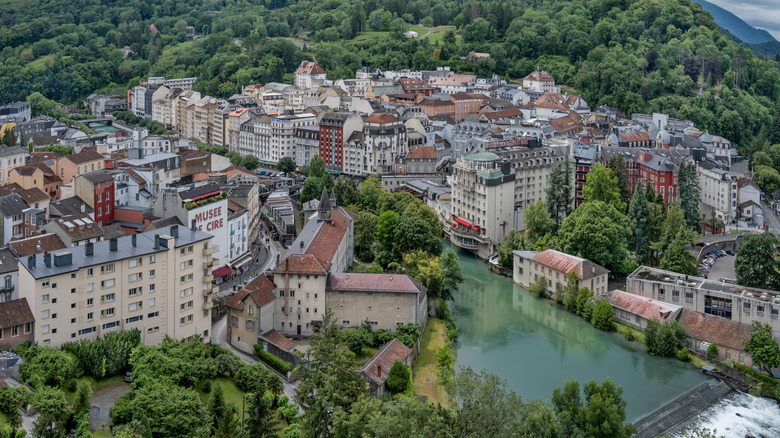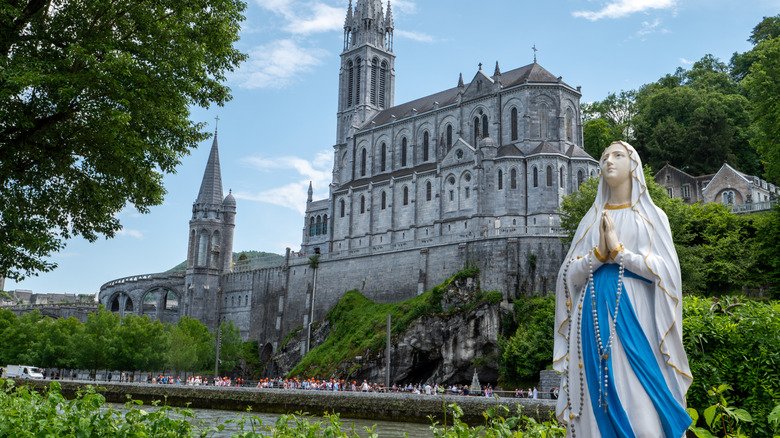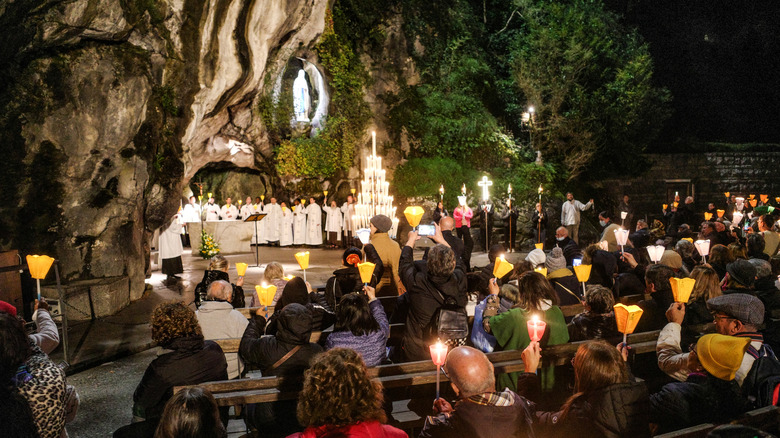A Charming Town In Southwestern France Is Highly Regarded As A 'Capital Of Miracles'
In certain travel categories — like cuisine, wine, or a particular activity or theme — some destinations stand out above others. For example, New Zealand's Queenstown is a lakeside gem considered the world's adventure capital, whereas the world's rodeo capital is located near Yellowstone National Park in Cody, Wyoming. Believe it or not, the world has a miracle capital, too, tucked away in the southwestern corner of France near the Spanish border.
The town is called Lourdes, and over the past 142 years or so, more than 7,000 pilgrims and visitors have reported unexplained healings here. An entity established by the Catholic Church — the Bureau des Constatations Médicales de Lourdes (Medical Bureau of the Sanctuary) — employs a permanent medical doctor. Dr Alessandro de Franciscis, alongside his colleagues, thoroughly investigates all healings, and in 2025, confirmed that 72 of them were bona fide religious, medical miracles.
The mysteries of Lourdes date back to February 11, 1858, when a 14-year-old girl by the name of Bernadette Soubirous began seeing and speaking to an apparition of the Virgin Mary near a cave on the edge of town, the Massabielle Grotto. The apparition informed Bernadette about a spring hidden near the mouth of the cave. It's after contact with this spring water that most Lourdes miracles occur, even though testing has revealed that there's nothing chemically unusual about it.
Anatomy of a Lourdes miracle
Miracles are outstanding events inexplicable by common sense, scientific methods, or the natural world as we know it. If your mood suddenly brightens or your toothache disappears after guzzling some Lourdes water, that's a good thing. But it probably won't pass Lourdes' strict divine intervention test.
For the bureau to certify that a miracle has occurred, several requirements must be met. First, the cured person's sickness must have been serious, with an unfavorable prognosis, and the person must be able to present biological or radiological evidence that they had this disease. Next, the Lourdes healing experience must have been instantaneous and not involve any convalescence period, and the bureau must verify that no other treatments or interventions were responsible for it. Finally, remissions and simple regressions of symptoms do not qualify as miracles — there must be a lasting and definitive return of all vital functions.
People of many ages and nationalities have experienced verified Lourdes cures. Interestingly, 80% have been women. The most recently verified miracle cure happened to an Italian woman, Antonietta Raco, who suffered from a degenerative neuromuscular condition known as primary lateral sclerosis. In 2009, after immersion in the waters at Lourdes, Raco "began to move independently," after which "the effects of the infamous illness immediately and definitively disappeared," per the post on X, formerly known as Twitter, by the Sanctuary of Our Lady of Lourdes (via Catholic News Agency).
Visiting Lourdes
The Lourdes sanctuary, as it has come to be known, spreads nearly 130 acres. In addition to the Massabielle Grotto, it includes the religious hub — the Basilica of Our Lady of the Immaculate — and 22 other places of worship. Even if you're not in the market for miracles or even of the Catholic faith, the Lourdes sanctuary is one of those natural wonders you should experience while visiting France. However, those seeking solitude may want to go elsewhere, as it can be a very crowded place, with 4 to 6 million annual pilgrims and visitors.
Many hotels operate in and around Lourdes to house the high number of visitors, ranging from budget ($50 per night) to luxury ($160) options and everything in between. Another budget-conscious lodging option in Lourdes is a religious guest house like the Petit Couvent or Centre Assomption, which offers spaces for meditation and contemplation as well as communal areas for meals and prayers. Excellent choices for guests with mobility needs are the Hôtel Padoue and Hotel Roissy. For extended stays, Zenitude Hôtel-Résidences rents fully adapted apartments with facilities such as height-adjustable beds, emergency call systems, obstacle-free pathways, and a complimentary shuttle service between the apartments and the sanctuary sites.
Closest airports to Lourdes are the Tarbes-Lourdes-Pyrénées Airport (16 minutes) and the Pau-Pyrénées Airport (one hour). Direct trains run between Paris (Montparnasse) and Lourdes and take five-and-a-half hours. Direct trains are also available between Lourdes and other French cities, including Bordeaux, Toulouse, Marseille, Nice, Lyon, Ventimiglia, Hendaye, and Irún.


